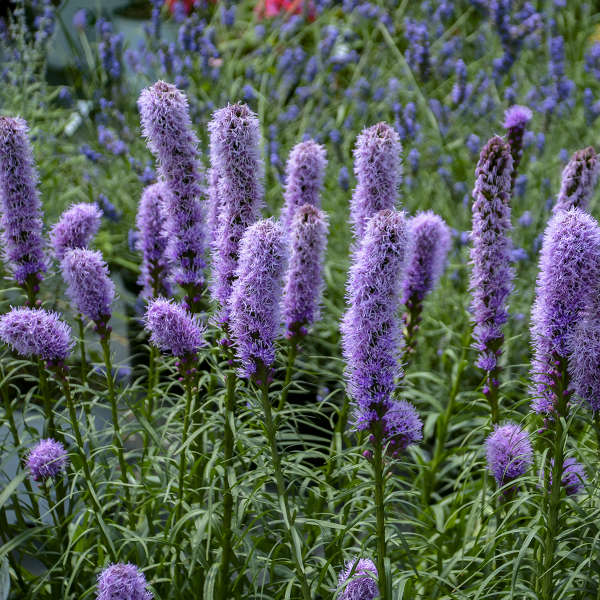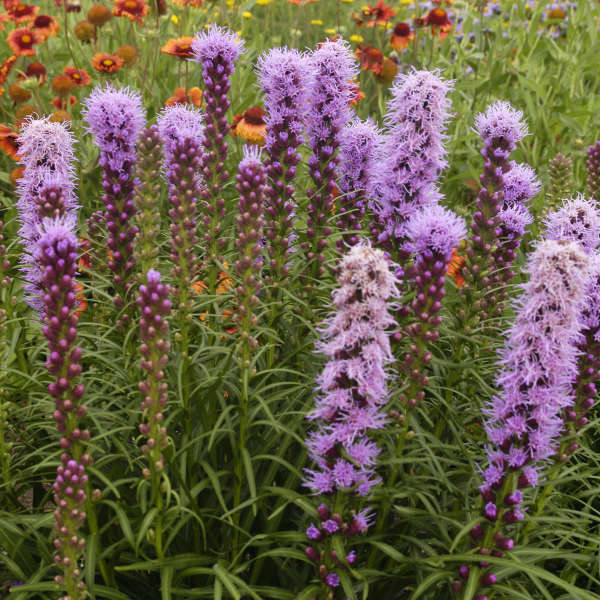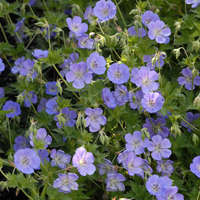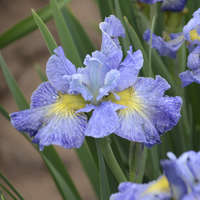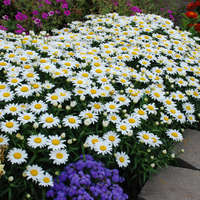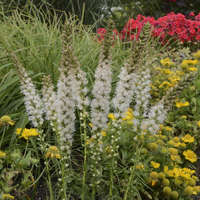Growing Temperature:
55-60° F days
50-55° F nights
Holding Temperature:
50-55° F
Soil PH:
5.8-6.5
EC (What is EC?):
1.0-1.5 pour through method
Fertility:
Liatris have a moderate fertility requirement, feed at 100-150 ppm N with every watering. Flower spikes can become weak if overfertilized.
For Controlled Release or Slow Release Fertilizer, see your preferred supplier for recommended rates for incorporation or top dressing, as it varies by fertilizer.
Vernalization:
Bare root plants that are shipped in spring will arrive vernalized.
Pests & Diseases:
Thrips, mites and caterpillars are the main pests of liatris.
Botrytis, Rhizoctonia leaf spots, rusts and Verticillium are the primary diseases to watch for.
Potting & Timing:
Plant in a well-drained soilless media.
Moisture:
Liatris prefer consistent moisture, overwatering can lead to rotting of the corms.
Planting Level:
Plant bare root corms with the top right at the soil surface, just barely covered with soil.
PGRs/Pinching:
Tank mixes of Daminozide (B-Nine/Dazide) and Uniconazole (Sumatic/Concise) sprays at 2500-5000 ppm + 3 -5 ppm or Uniconazole alone at 5-15 ppm can be used to control flower stem elongation.
Lighting:
Provide high light levels. Long days promote flower stem elongation and results in stem length increases of up to 40%. This can be useful when growing for cut flowers.

